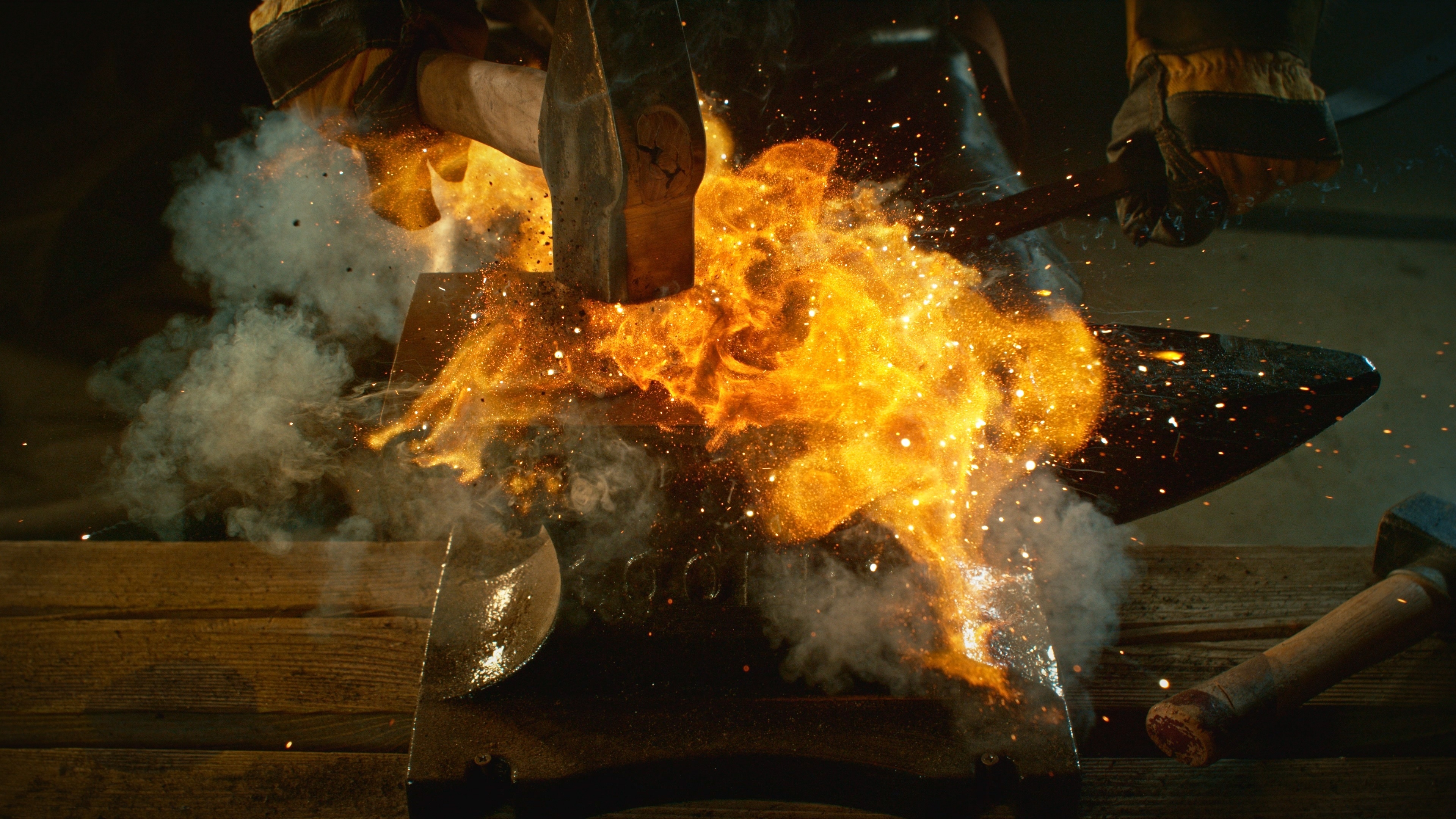
Concrete, insulation, cladding—these materials form the skeleton of our built environment, however behind their utility lies a pressing problem: the construction sector is one of the most resource- and carbon-intensive industries on the planet. As the construction industry searches for cleaner alternatives, a growing number of innovators are turning to biology for solutions. Inspired by natural processes, bio-cement technologies are already being applied to create greener foundations, and they’re just the beginning. From bacteria-seeded self-healing concrete to mycelium-based insulation, synthetic biology and biomaterials are driving a shift toward circular, low-impact building systems. The future of construction may be grown, not mined.
We recently heard how microorganisms have been engineered to produce “Bioglass” —an intriguing development given that we often see glass as a man-made material. While the prospect of bio-glass producing bacteria is exciting, the field itself is in its infancy compared to the field of bio-building materials, specifically bio-cement. Companies operating in this area utilise microorganisms which secrete calcium carbonate deposits with properties similar to concrete, all with the aim of mitigating the destructive effects of man-made concrete.
Bio-concrete
Inspired by calcium carbonate production within coral reefs and shells, US/Denmark based company Biomason have developed a low-carbon input bio-cement alternative to traditional concrete which utilises bacteria. The technology is based on the principals of microbiologically induced calcium carbonate precipitation (MICP) and has been used to create building materials which are reportedly three times stronger than traditional concrete. The chosen bacteria are combined with broken down stone aggregates, and when supplied with a concoction of nutrients including calcium and carbon, the microorganisms begin depositing calcium carbonate which binds the aggregate together.
Like Biomason, Prometheus Materials have made use of MCIP, but instead of bacteria, the University of Colorado spin-out have harnessed the potential of the coccolithophore microalgae. Coccolithophores, such as Emiliania huxleyi, are the most productive calcifying organisms in the ocean. The Prometheus manufacturing process combines microalgae with water, sunlight and CO2 to create a bio-cement that can be mixed with aggregate to create concrete.
However, the pièce de resistance of Prometheus’ tech is that, because coccolithophore are photosynthesising organisms, the presence of sunlight and CO2 during the production process allows the algae to photosynthesise, actively sequestering carbon from the environment during cement production. Thus, photosynthesis-driven biomineralization as performed by coccolithophore provides a means to produce biomineralized CaCO3 which can be used as a direct replacement for limestone in traditional cement production, but with a reduced carbon impact. A far-cry from traditional concrete, which is said to be responsible for up to 8% of the word’s CO2.
As well as synthesising new concrete, several enterprises have developed bio-concrete compositions which can ‘self-heal’ to repair cracks that emerge with time and stress. Basilisk, for example, have commercialised a concrete mixture to which specialised calcium carbonate producing bacteria are added that can tolerate the high alkaline conditions of concentre. These bacteria produce spores capable of withstanding the high pressure and stress of concrete casting as well as high temperature and dehydration. Mixed in are also lactate‐based organic compounds like calcium lactate and lactide‐polymers which act as a carbon-rich food source for the bacteria. Remarkably, when cracks emerge and water penetrates the concrete, the spores are activated and the bacteria population starts to grow, feeding on the specialised food source and secreting calcium carbonate which seals the crack.
These bio-based concrete alternatives offer considerable energy and carbon savings compared to traditional methods of producing concrete. While more research and investment will be required to make bio-concrete a competitive alternative for the majority of the industry, these existing technologies provide a strong first course for future development of this field. Particularly exciting is the prospect of applying synthetic biology principles to the existing MICP technologies - it is easy to envisage how, like for Bioglass, the calcium carbonate producing organisms of choice could be engineered to fine tune the properties of bio-concrete.
Bio-insultation
As well as improving traditional building materials like concrete, synthetic biology approaches are also being used to design completely new building materials. In particular, the past few years has seen exciting innovation in SynBio-based insulation materials.
Honext, a Barcelona-based company with a vision of creating a truly circular product, has turned industrial residual fibres from papermaking and cardboard into boards for construction. Honext’s process takes waste cellulose fibres that would typically end up in landfill or be incinerated and processes them with their proprietary enzymatic treatment. This treatment binds cellulose fibres, creating strong, sustainable, and insulating multi-purpose construction boards, without the need for traditional resins.
In a similar vein, Biohm is a London-based biotechnology company that aims to let nature take the lead in their innovation. They have developed a mycelium-based technology, cultivating mycelium through a biofabrication process to create useful products for the construction industry. By utilising waste products from other industries, Biohm have produced a sustainable, biodegradable, and naturally fire-retardant insulation board; a much more planet-friendly alternative to traditional petro-chemical based insulation. On top of this, Biohm have also developed a whole new problem-solving tool, “BiomIMETA”, that uses the principles of biomimetics (taking elements from nature to solve human problems) to support new product design.
A strong and green future
In the UK, foundations have been laid to support and drive forward growth in the bio-materials sector. For example, in the North East of England you will find the world’s first research Hub for Biotechnology in the Built Environment (HBBE), contributed to by Newcastle and Northumbria Universities. The HBBE aims to develop biotechnologies to create a new generation of ‘Living Buildings’ which are responsible and responsive to their natural environment, such as buildings made from bioengineered and living materials, which reduce the need for inefficient industrial construction processes. The Hub’s work includes the EmbryOme 1 project, which showcases a new bio-fabrication approach that uses bacteria-driven MICP in submerged soft fabric casts to solidify sand into architectural forms. This has culminated in the development of “Water Kilns”- bioreactors that mimic traditional kilning through biological processes.
Meanwhile, the Living Manufacture project aims to develop a new 3D printing process using engineered microbes and custom bioreactors. The aim is to produce functionally graded biopolymer materials through controlled biological growth, which could have applications in biomedical, manufacturing, and consumer goods sectors. Other programmes at the HBBE focus on enzymatic upcycling of textile waste into mycelium leather, circular manufacturing of water repelling cellulose, and building metabolism – a programme that supports enzyme discovery and engineering using in silico modelling and machine learning.
Elsewhere, Cambridge based Biozeroc are emerging as a strong player in the bio-cement space, having developed a method for accelerated calcite production resulting in faster production of zero carbon concrete. Their BioConcrete solution is strong too, and Biozeroc consider their concrete smoother and less porous than standard concrete. We are looking forward to seeing how the R&D programme progresses at Biozeroc as the company grows and their bio-cement production is scaled up.
The steps made by these research teams and companies represent just the tip of the iceberg when it comes to the opportunities that microorganisms can unlock. As we understand more about the long-term environmental challenges associated with the production of traditional man-made materials, we increasingly need to find sustainable alternatives. We are excited to see the development of new products with a foundation in synthetic biology as awareness of the versatility of the field grows.
Calum is a patent technical assistant working in our Life Sciences team. Calum graduated from Durham University with a degree in Biological Sciences and has recently completed a PhD at the University of Bristol and the John Innes Centre, Norwich.
Email: calum.graham@mewburn.com
Sign up to our newsletter: Forward - news, insights and features
Our people
Our IP specialists work at all stage of the IP life cycle and provide strategic advice about patent, trade mark and registered designs, as well as any IP-related disputes and legal and commercial requirements.
Our peopleContact Us
We have an easily-accessible office in central London, as well as a number of regional offices throughout the UK and an office in Munich, Germany. We’d love to hear from you, so please get in touch.
Get in touch

